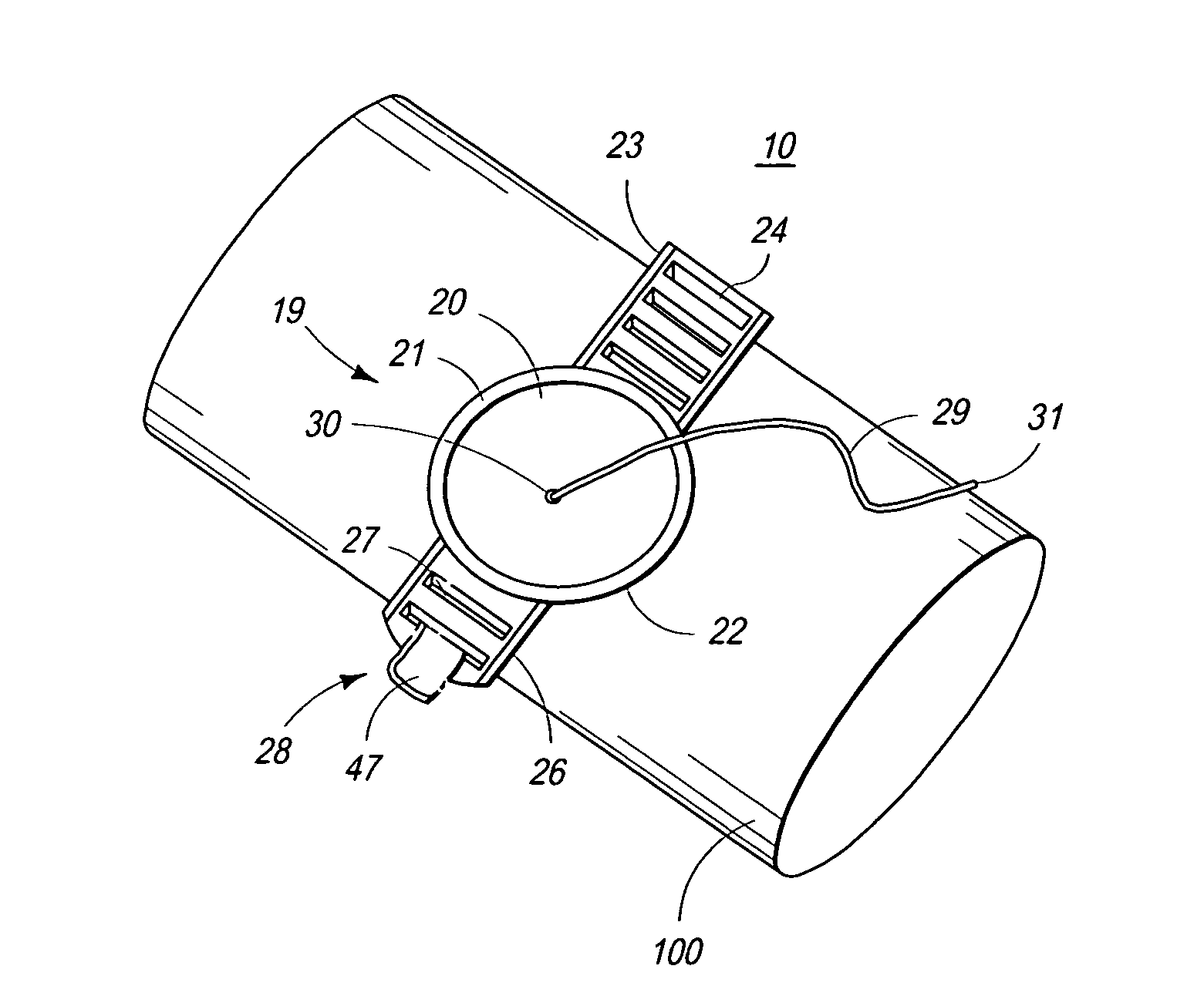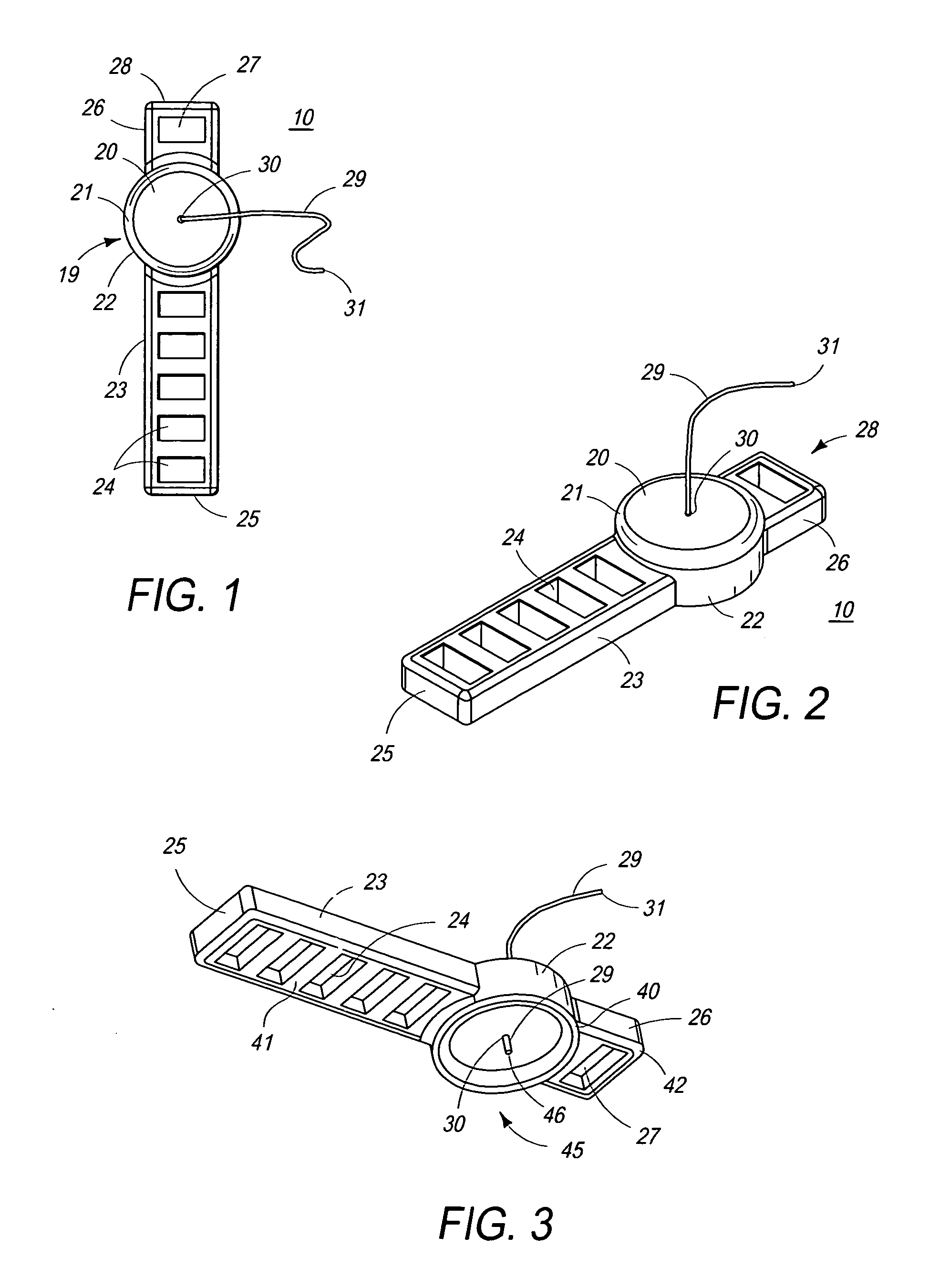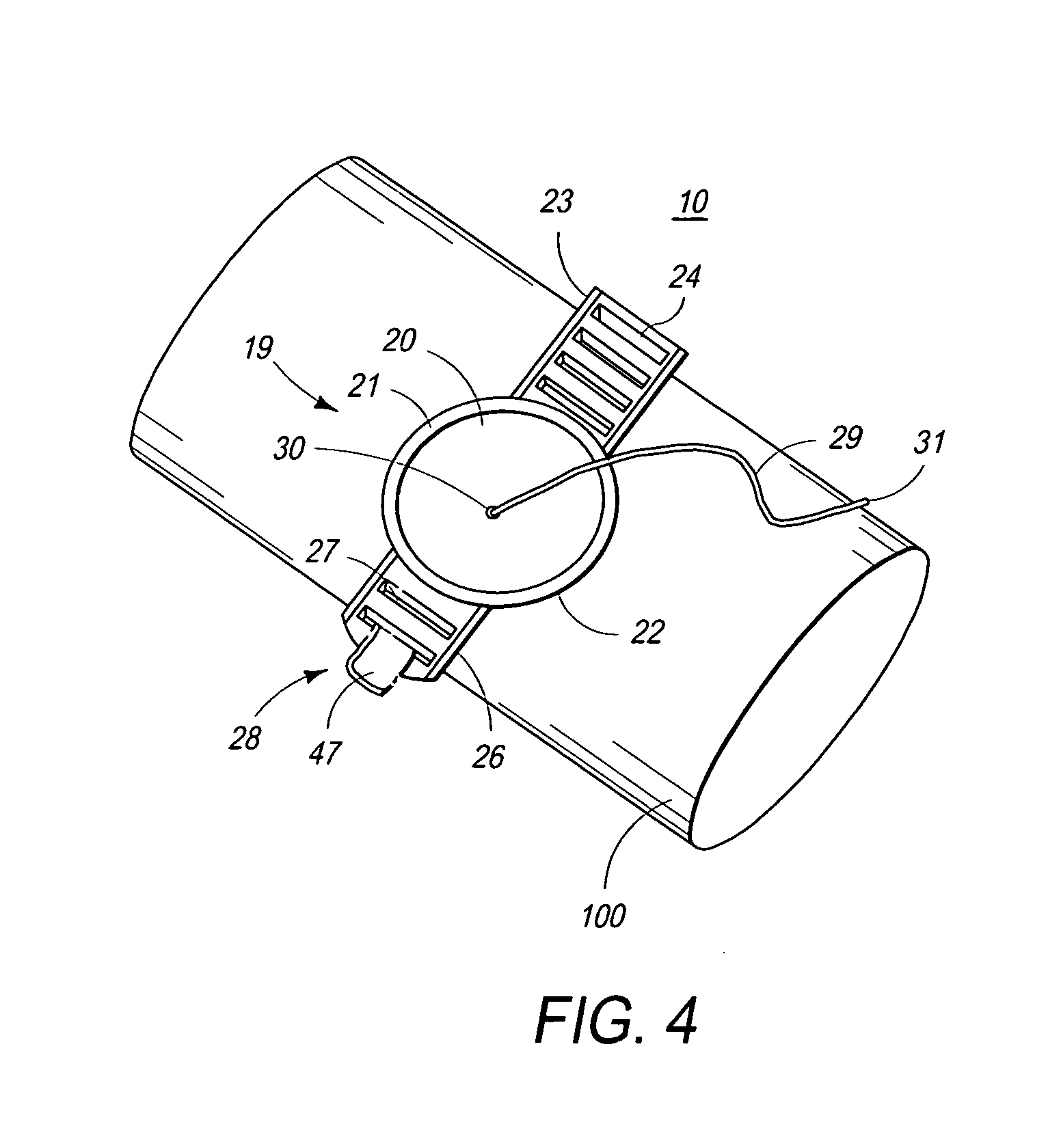Line & pipe flexible temperature sensor assembly
a flexible temperature sensor and pipe technology, applied in the field of temperature sensors, can solve the problems of difficult sealing of such a fluid line, difficult direct reading of fluid within a fluid line, and high cost, and achieve the effect of inexpensively reading the surface temperature, quick and easy reading of the surface temperature, and quick and easy opening of the fluid line to insert the sensor
- Summary
- Abstract
- Description
- Claims
- Application Information
AI Technical Summary
Benefits of technology
Problems solved by technology
Method used
Image
Examples
first embodiment
[0055]Referring initially to FIG. 1, the Assembly of the present invention 10 is shown in top down view, i.e. viewed from above the Assembly. In FIG. 1, Housing 19 may be seen, having generally circular form, with shoulders 21 extending to Housing sidewall 22, and Housing top 20. Strap first part 23, with slits 24 formed therein, and strap first part end 25, may also be seen extending from Housing sidewall 22 on one side of Housing 19. Strap second part 26, with at least one slit 27 formed therein, and strap second part end 28, may also be seen extending from Housing sidewall 22 on the opposite side of Housing 19 from strap first part 23. The at least one slit 27 may be fitted with a hook (not shown) or adjustment prong (not shown), or such hook or adjustment prong (not shown) may be formed integrally with strap second part 26, typically at or near its strap second part end 28. Contact Temperature Sensor Lead 29 may be seen emanating from a channel 30 at the center of the top of Hou...
second embodiment
[0061]Turning now to FIG. 5, the Assembly 60 of the present invention is shown in partially disassembled perspective view. In FIG. 5, Housing 69 may he seen, having generally circular form, with shoulders 71 extending to Housing sidewall 72, and Housing top 70. Strap first part 73, with slits 74 formed therein, and strap first part end 75, may also be seen extending from Housing sidewall 72 on one side of Housing 69. Strap second part 76, with at least one slit 77 formed therein, and strap second part end 78, may also be seen extending from Housing sidewall 72 on the opposite side of Housing 69 from strap first part 73. The at least one slit 77 has been fitted with hook 101 near strap second part end 78, and hook end 102 may be seen extending for engagement with one of slits 74, while hook base 103 may be seen anchoring hook 101 through slit 77. Contact Temperature Sensor Lead 79 may be seen emanating from channel 80 at the center of Housing 69 top 70. Lead 79 is electrically connec...
PUM
| Property | Measurement | Unit |
|---|---|---|
| flexible | aaaaa | aaaaa |
| resilient | aaaaa | aaaaa |
| temperature | aaaaa | aaaaa |
Abstract
Description
Claims
Application Information
 Login to View More
Login to View More - R&D
- Intellectual Property
- Life Sciences
- Materials
- Tech Scout
- Unparalleled Data Quality
- Higher Quality Content
- 60% Fewer Hallucinations
Browse by: Latest US Patents, China's latest patents, Technical Efficacy Thesaurus, Application Domain, Technology Topic, Popular Technical Reports.
© 2025 PatSnap. All rights reserved.Legal|Privacy policy|Modern Slavery Act Transparency Statement|Sitemap|About US| Contact US: help@patsnap.com



